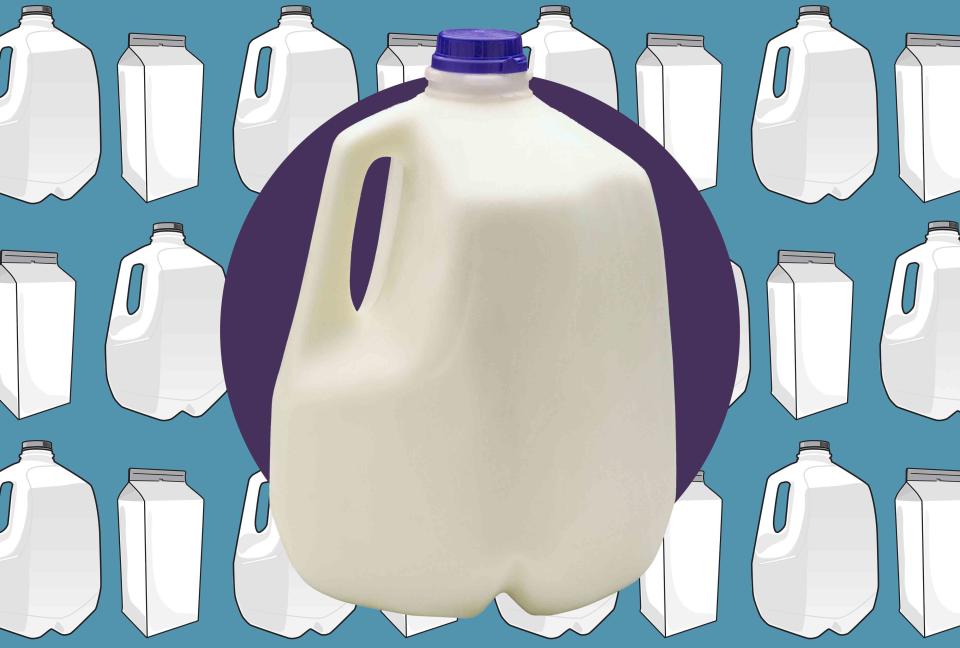Here’s the Actual Difference Between Whole, Low-fat, and Nonfat Milk
You guessed right: it’s the fat. And it all comes down to percentages.

Food & Wine / Getty Images
Pints, quarts, and gallons, oh my! When you walk into most grocery stores, you’re faced with a swarm of milk options in the dairy aisle. No matter what size you’re buying, the most important information is the name on the label: whole, low-fat, nonfat (or skim). These names refer to the milk fat percentage, aka the fat content as a percentage of the total weight of the liquid milk; a higher percentage means more fat.
Whole milk
Creamy and delicious, whole milk — also called "regular" milk — is cow's milk with all of its fat content, containing approximately 3.25% milk fat according to the U.S. Department of Agriculture (USDA). Although whole milk has a similar viscosity to low-fat milk, it offers a richer and fuller mouthfeel overall. And, despite their growing popularity, non-dairy alternative milks don’t have the same oomph that whole milk brings to certain recipes. Whole milk offers so many possibilities in the kitchen, it’s my personal opinion that using whole milk in a bowl of cereal is a waste! Soak a piece of bread in whole milk to make an excellent binder for meatballs that keeps them moist and tender. Whole milk leads the charge in a decadent mornay sauce, which takes this spinach lasagna to the next level. The milk in fluffy Japanese milk bread is — you guessed it — whole milk. And chocolate milk or cozy hot chocolate made with whole milk just hits differently.
Low-fat milk: Two percent and one percent
Low-fat milk, also called reduced-fat milk, is available in two varieties: 2% and 1%. These milks still contain some fat, but not as much as the 3.25% of whole milk. (Still, the difference is in a matter of single digits—a little milk fat goes a long way!) A splash of low-fat milk can thin out a pancake batter for light and fluffy cakes or make a creamy base for a homemade yogurt.
Nonfat milk
Nonfat, or skim, milk contains less than 0.5% milk fat according to the FDA. Nonfat milk tastes lighter and feels thinner than both whole and low-fat milks. It has a time and a place — perhaps in your bowl of cereal, smoothie, or cup of coffee — but it doesn’t make for a good 1:1 substitute in recipes that call for whole milk. (The recipe will be counting on the fat present in whole milk.) If you want a lower-fat swap, go for 2% rather than nonfat milk.
For more Food & Wine news, make sure to sign up for our newsletter!
Read the original article on Food & Wine.


